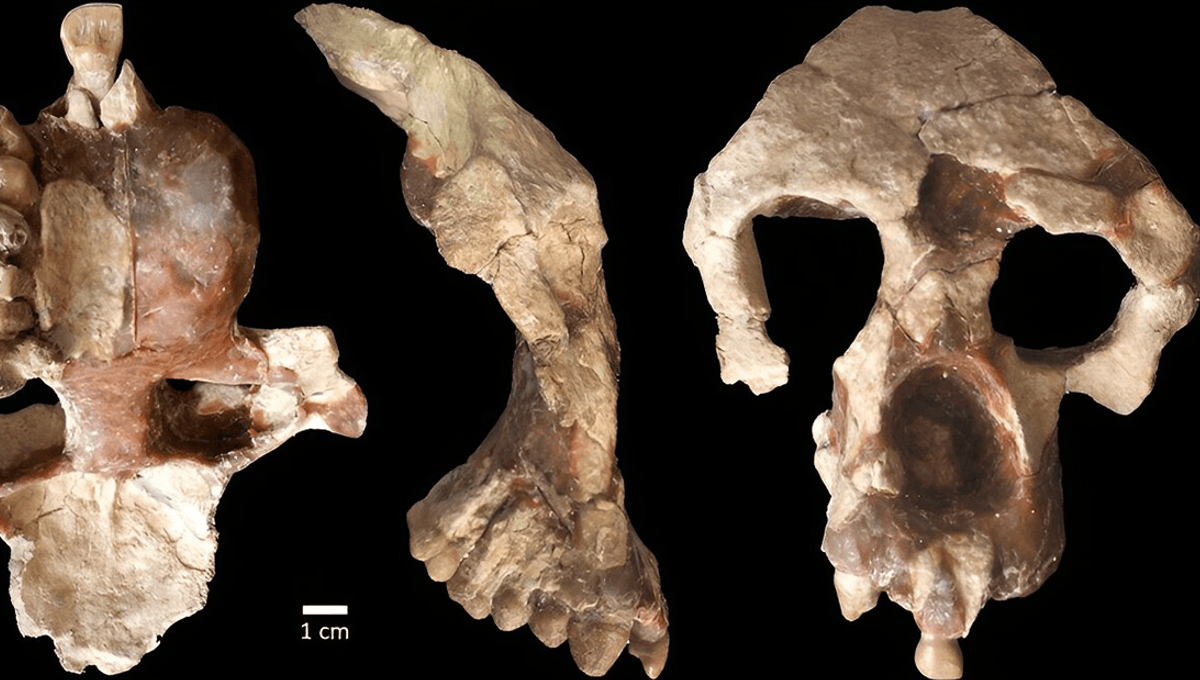
A newly-identified ape, named Anadoluvius turkae, may challenge our origin story once more, according to a new study. The fossilized ape, found in an 8.7-million-year-old site in Türkiye, suggests that the ancestors of humans and African apes evolved in Europe before migrating to Africa between 9 and 7 million years ago.
A well-preserved partial cranium, which was uncovered in 2015, allowed the team to use a program for determining evolutionary relationships. Analyzing the fossil revealed that A. turkae would have been around the size of a large male chimpanzee, or the size of an average female gorilla.
The team placed the ape as an early hominine, a group that includes African apes, including chimpanzees, gorillas, and bonobos. The earliest known humans were found in Africa. However, the team believes that this new fossil adds evidence that the ancestors of African apes and humans were in Europe before they were in Africa.
“Our findings further suggest that hominines not only evolved in western and central Europe but spent over 5 million years evolving there and spreading to the eastern Mediterranean before eventually dispersing into Africa, probably as a consequence of changing environments and diminishing forests,” Professor David Begun from the Department of Anthropology at the University of Toronto said in a press release.
“The members of this radiation to which Anadoluvius belongs are currently only identified in Europe and Anatolia.”
According to the team, Anadoluvius likely lived alongside animals similar to the large animals found in Africa today, with the whole lot migrating into Africa sometime after 8 million years ago.
“We have no limb bones but judging from its jaws and teeth, the animals found alongside it, and the geological indicators of the environment, Anadoluvius probably lived in relatively open conditions, unlike the forest settings of living great apes,” Professor Ayla Sevim Erol from Ankara University added.
“More like what we think the environments of early humans in Africa were like. The powerful jaws and large, thickly enameled teeth suggest a diet including hard or tough food items from terrestrial sources such as roots and rhizomes.”
It is still possible that an ancestor ape came from Africa into Europe before this, although there isn’t so much in the way of evidence.
“These findings contrast with the long-held view that African apes and humans evolved exclusively in Africa. While the remains of early hominines are abundant in Europe and Anatolia, they are completely absent from Africa until the first hominin appeared there about 7 million years ago,” Begun continued.
“This new evidence supports the hypothesis that hominines originated in Europe and dispersed into Africa along with many other mammals between 9 and 7 million years ago, though it does not definitively prove it.”
“For that, we need to find more fossils from Europe and Africa between 8 and 7 million years old to establish a definitive connection between the two groups.”
The study is published in Communications Biology.
Source Link: Ancient Ape Fossil Suggests Our Ancestors Were In Europe Before Africa